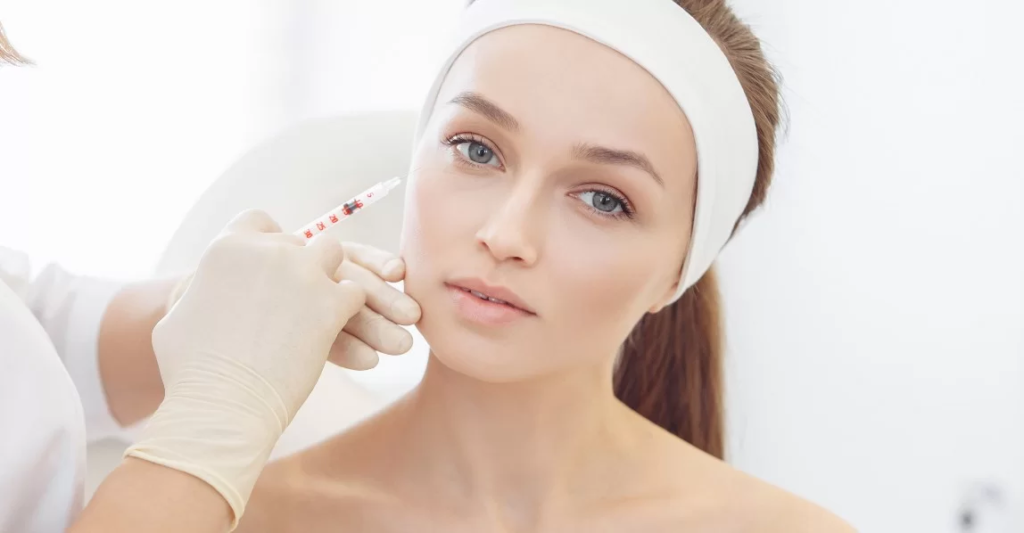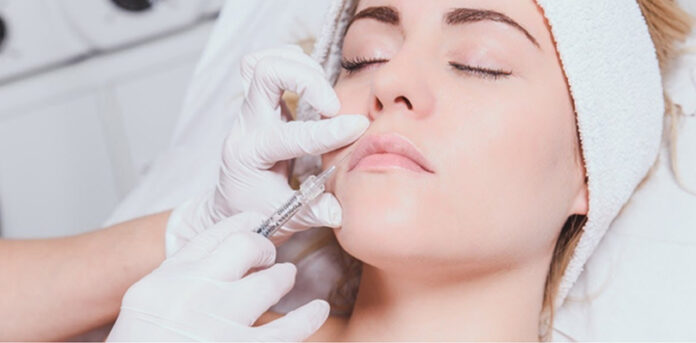Botox has become a common term in the world of beauty. It’s not just a cosmetic product but also a representation of the intersection of science and aesthetics. Originally derived from the botulinum toxin, Botox was initially used for medical purposes. However, it has now transformed into a cosmetic treatment that helps people achieve a youthful appearance.
What Is Botox?
Botox, which is short for botulinum toxin, is a strong neurotoxin produced by the bacterium Clostridium botulinum. Despite its toxic nature, it has found various medical and cosmetic applications when used in controlled and highly diluted amounts. The primary function of Botox is to temporarily paralyze or weaken muscle activity, making it valuable in both therapeutic and aesthetic contexts.
Initially, it was used in the medical field to treat conditions characterized by overactive muscle contractions, such as crossed eyes (strabismus) and eyelid spasms (blepharospasm). However, its cosmetic applications have gained widespread attention and acceptance.
In the field of aesthetics, Botox is commonly used to reduce the appearance of facial wrinkles and fine lines, particularly those caused by repetitive muscle movements and expressions. Injecting it into specific muscles blocks signals from nerves to muscles, preventing them from contracting fully. As a result, the targeted facial muscles relax, leading to the smoothing of wrinkles and a more youthful appearance.
The popularity of Botox in cosmetic procedures has soared, making it one of the most sought-after non-surgical treatments for facial rejuvenation. Common areas of application include frown lines, forehead lines, crow’s feet around the eyes, and lines around the mouth.
It is crucial to note that while it is generally considered safe when administered by trained professionals, it is not without risks or potential side effects. Individual responses can vary, and consultation with a qualified healthcare provider is essential to determine the suitability of Botox for specific cosmetic or medical purposes.
How Botox Works
Paralyzing Muscle Activity

Botox works by utilizing the neurotoxic characteristics of botulinum toxin. When administered, it particularly targets and obstructs the release of acetylcholine, which is a neurotransmitter that causes muscle contractions. By interrupting this signaling process at the neuromuscular junction, Botox efficiently weakens or paralyzes the intended muscles.
Smoothing Wrinkles and Fine Lines
Botox is effective in reducing the appearance of dynamic wrinkles that typically form due to repetitive muscle movements caused by facial expressions such as smiling, frowning, and squinting. The treatment works by relaxing the specific muscles responsible for these expressions, thereby preventing them from contracting fully. This results in smoother overlying skin, which reduces the appearance of wrinkles and fine lines.
Duration of Effects
Although Botox is not a permanent solution, it can temporarily reduce the signs of aging. The duration of its effects can vary depending on the individual but typically lasts between three to six months. As the muscle-paralyzing effects gradually fade away, muscle activity resumes, and wrinkles may reappear. Regular maintenance treatments are common for those seeking continuous benefits from Botox.
Benefits Of Botox
Here are some potential benefits of Botox you need to know:
- Botox is an effective way to reduce the appearance of wrinkles and fine lines, especially in areas of the face that are prone to dynamic facial expressions.
- It is a non-surgical, injectable treatment that offers a convenient and quick procedure with minimal downtime.
- When administered by a skilled professional, it allows for natural facial expressions, avoiding a frozen or artificial appearance.
- It is versatile and can be used in various facial areas such as forehead lines, frown lines, crow’s feet, and more, addressing multiple concerns with a single treatment.
- It has been approved for the treatment of chronic migraines and excessive sweating.
- By relaxing targeted muscles, it imparts a more youthful and refreshed look, contributing to increased self-confidence.
- The temporary nature of Botox allows individuals to test the waters of cosmetic enhancement without committing to long-term changes, providing flexibility in personal aesthetic choices.
- Such treatments are customizable, allowing healthcare professionals to tailor the approach based on individual concerns and desired outcomes.
Risks
- Bruising and swelling are common side effects of Botox injections. They usually occur at the injection site and are temporary, but they can be bothersome for some individuals.
- Muscle weakness is another potential side effect of Botox. Since the drug works by temporarily paralyzing or weakening muscles, there is a risk of unintended weakness in surrounding areas. This can cause temporary asymmetry or an unnatural appearance if the injection is not administered by a skilled professional.
- Allergic reactions to Botox are rare but possible. Some people may experience itching, rash, or difficulty breathing as a result of an allergic response. It is important to inform the healthcare provider of any known allergies before undergoing treatment.
- Headaches or nausea may occur after Botox injections, but they are typically mild and short-lived. If you experience these symptoms, you should report them to your healthcare provider.
- Drooping eyelids or brows can occur if Botox is not injected properly. This is usually a result of the diffusion of Botox to unintended areas and highlights the importance of seeking treatment from experienced practitioners.
- Flu-like symptoms, such as fatigue and muscle weakness, are rare but possible after Botox injections. If you experience these symptoms, you should promptly inform your healthcare provider.
- Difficulty swallowing or breathing is an extremely uncommon but potentially serious side effect of Botox. If you experience these symptoms, you should seek immediate medical attention.
- In rare cases, the botulinum toxin can spread beyond the injection site and cause unexpected muscle paralysis or systemic effects. This risk underscores the importance of receiving Botox from qualified and experienced practitioners.
Recovery And Post-Treatment Care
Proper post-botox care is essential for optimal results. A mindful recovery approach, including avoiding strenuous activities and diligent skincare, can enhance the treatment’s effectiveness and longevity. Here’s what you need to know about recovery and post-treatment care:
- After receiving Botox injections, it is recommended that you avoid rubbing or massaging the treated areas for several hours. This will help to reduce the risk of the toxin spreading to unintended muscles.
- It is also advisable to avoid engaging in strenuous physical activities, including vigorous exercise, for the first 24 hours after treatment. This will help prevent the displacement of the injected toxin.
- Maintaining an upright position for a few hours after treatment is also recommended. This will minimize the potential for Botox to migrate to unwanted areas, especially in facial treatments.
- It’s important to avoid alcohol consumption for at least 24 hours post-treatment. Alcohol can increase the risk of bruising and may affect the efficacy of Botox during the initial stages of recovery.
- To reduce swelling and alleviate any discomfort, you can apply a cold compress to the treated areas. However, it’s essential to use a gentle touch to avoid disturbing the injected Botox.

